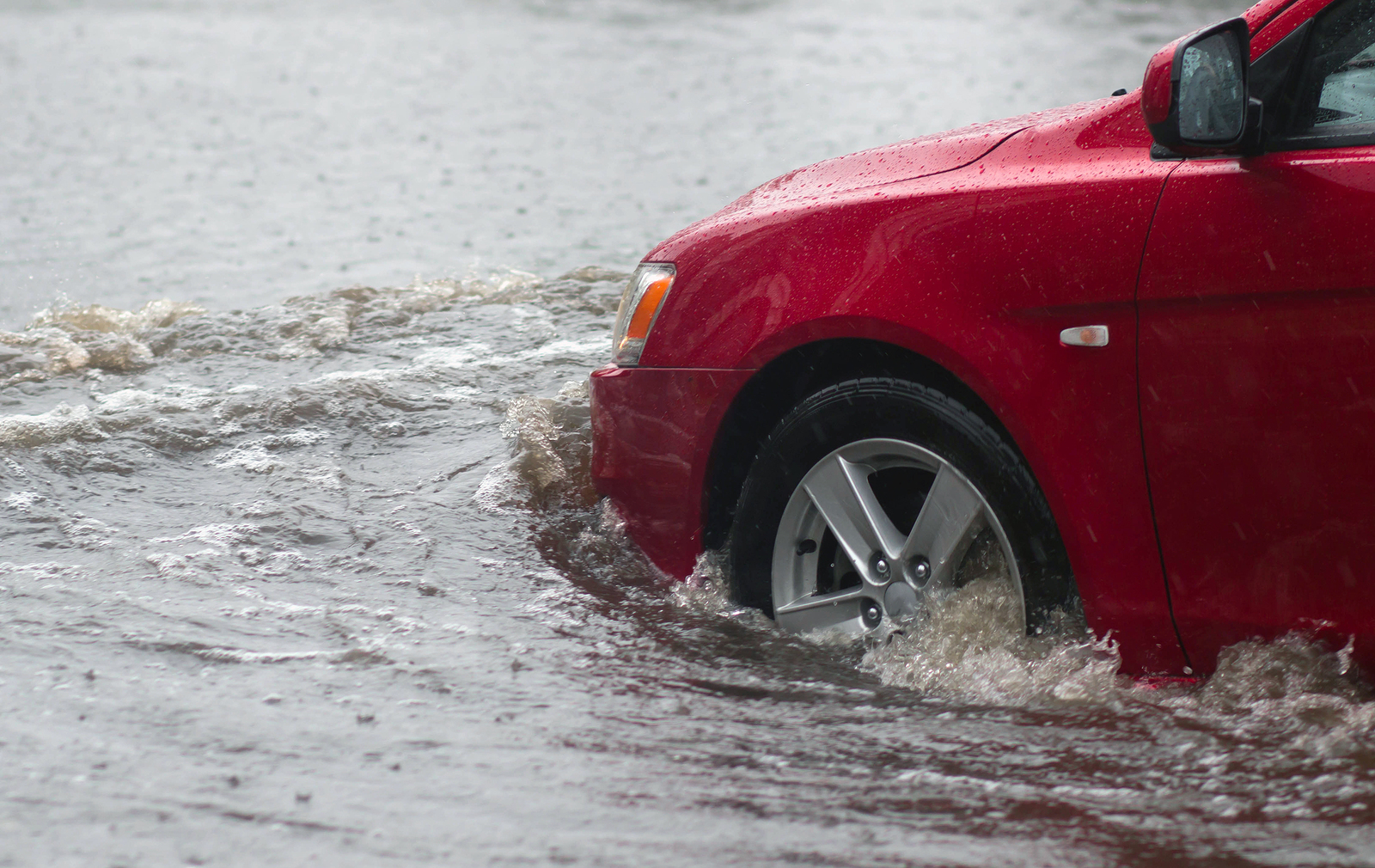
Many people out shopping for a used car don’t realize how extensively water damage can impact a vehicle, even if the problems aren’t immediately visible to buyers.
With the recent passing of hurricanes Harvey, Irma, and Maria, flood damage is a major concern for used car buyers. Experts claim that half a million cars were damaged during the spread of destruction caused by the three major storms in 2017, and according to CARFAX’s experience in the industry, about half of these will make their way into the pre-owned marketplace.[i]
While it is legal and permissible to sell water-damaged cars with the proper disclosures, unscrupulous sellers have been known to make cosmetic repairs and resell vehicles without informing buyers about any past flood history.
If you’re in the market for a used car, you’ll want to run the VIN (vehicle identification number) first to make sure that no water damage has been reported. CARFAX provides this service free to consumers.
Then, to protect yourself against shady operators or vehicles that haven’t suffered enough damage to be labelled with a salvaged title, heed the eight tips below to help you determine if the vehicle you’re about to buy has suffered severe water exposure.
- Use Your Nose
When a car falls victim to flood damage, it can be hard to get rid of the mildew formation and moldy aroma. A keen nose can help you identify either one of these, indicating that the car may have had significant water exposure. Just be sure to first remove any air fresheners as these can mask the smell.
- Inspect the Undercarriage
Check for flaking metal or rust on the undercarriage of the car. Depending upon the age of the vehicle and where you live, this may be a sign of extensive water exposure. Newer cars should be free of rust or corrosion.
- Look for Discolored Carpet
A difference in color between upper and lower upholstery sections of the car or large stains may indicate the car was in a flood. All-new upholstery could also be a sign, particularly when combined with other items on this list.
- Check Under the Hood
A quick look beneath the hood could be a lifesaver. Look to see if the crankcase oil is clear or dark. If it looks like chocolate milk, this could be a sign there was water intrusion. Stains on the air filter as well as water lines on the inner fenders, firewall and components, or silt in the engine compartment’s nooks and crannies could also signal flood damage.
- Check for Moisture in the Lights
Fog and water beads can build up in light fixtures after flood exposure. It takes time to evaporate, so you may still see moisture or water lines on the car’s reflector or inside the lens.
- Beware the Overly Clean
Unscrupulous sellers will be looking to cover as many visible signs of water damage as they can, and this requires extensive cleaning of the interior. If car upholstery, carpeting and even ceiling liners seem to have been vigorously shampooed, consider the possibility of flooding, particularly if other items on this list are apparent.
- Check for a Buildup of Dirt in Unusual Areas
Check areas like the upper carpeting under the car’s glove compartment or around the seat tracks for dirt buildup. Also check the trunk or cargo compartment, lifting up any carpeting for signs of caked on soil, rust or other particles.
- If you notice any of the signs above, have an independent mechanic take a look at the car. It will cost you some money, but he or she can recognize symptoms of damage that the average consumer will miss, such as grit or caked mud behind wiring harnesses, or around alternator crevices, power steering pumps, and recesses of starter motors and relays.
Remember, before you purchase your new, used car, be sure to compare auto insurance quotes by using our handy online insurance quote comparison tool to be certain you’re getting the best rate.
[i] Charles Krome. “Hurricane Harvey and the Flood of Water-damaged Used Cars.” CARFAX, Sept. 6, 2017. Web.